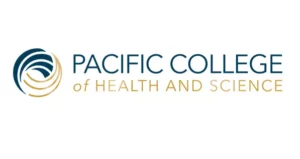By Hillary Thing, LAc
Lyme and similar devastating stealth infections are on a rise across the world. Chinese medicine practitioners across the United States and beyond are being faced with patients with illnesses that are difficult to diagnose and even more difficult to treat.
Many of us are drawn to Chinese medicine for its refined holistic diagnostic approach and untapped range of plant, dietary, and lifestyle medicines that can heal all types of infections and symptoms. We have a rich tradition to draw from, yet most practitioners still feel overwhelmed and unable to knowledgably lead these enigmatic patients out of the woods and into full health and disease resilience.
The real problem is not the effectiveness of Chinese medicine to treat these problems, but our ability as practitioners to:
- Recognize the true underlying causes of chronic multi-system inflammatory disease.
- Know how to navigate the maze of diagnostic and treatment options and be positive leaders for our patients.
- Understand how to wield the tools of Chinese medicine most effectively to create powerful results for this unique patient population.
The little-known secret sauce of Chinese medicine’s success in the treatment of mysterious and difficult-to-treat illnesses such as Lyme and tick-borne infections lies in some profound insights and treatment strategies that are as relevant today as when they were developed 3,000 years ago. Understanding the characteristics of Gu disease will give you immediate holistic insight into the nature of Lyme, parasitic, and chronic inflammatory disease.
Gu Syndrome: Ancient Insights Into A Modern Epidemic
Gu zheng, which can be translated as “possession syndrome”, is a Chinese medical diagnosis that describes a situation where a person’s body is overcome with one or many parasitic-type organisms. The visual pictogram of Gu in written language depicts worms breeding in a pot.
Gu is one of the oldest Chinese characters, and therefore a very old concept in Chinese culture. It’s been part of medical practice for many thousands of years and is discussed in the earliest Chinese medical texts, which are 3,000 years old.
Due perhaps to decreased immunity, compromised genetics, diet, or our sedentary tendencies, the average modern person is more susceptible to parasitic infection than people of the past.
Gu syndrome encompasses all complex chronic infections and inflammatory diseases and gives us a profound understanding of what we’re dealing with when a patient has chaotic multi-system health problems—whether or not we can identify through bloodwork the exact infection or infections that a patient has.
The Characteristics of Gu (Lyme and Lyme-Like) Diseases
Gu, as described in the classical Chinese medical texts, is characterized by a complex disease picture that first and foremost is triggered by infection from a parasitic organism such as Borreliosis burgdorferi, Babesia, or Bartonella.
Next, it often manifests in a combination of digestive, mental/cognitive, and nervous system symptoms such as insomnia and anxiety.
It is understood to:
- Be a disease experience that feels like a terrible calamity, like the worst thing that has or could ever happen to you. Lyme patients will often say “I feel like I’m dying”, “I feel like I’m being tortured,” or “I can’t take any more”. This is a trademark characteristic of Gu syndrome.
- Involve nonsensical or inexplicable symptoms (both for patient and practitioner) such as a seizure-like experience that doesn’t show up on an EEG or sensations that patients have a hard time putting into. This is common with Lyme disease and with Gu.
- Typically, medical diagnostic exams turn up nothing. Both Lyme and Gu are the diagnosis that’s left when all else has been proven negative.
- Gu pathogens also act as a type of toxin or poison (Gu du = Gu poison). We know this is true in Lyme disease because it’s corroborated by the fact that the metabolic byproducts of parasitic organisms are known to have a toxic effect on the body. Since the 7th century, classical Chinese medical texts have stated that “Gu can transform itself into harmful toxins”.
Lyme Disease Re-Defined: A Super-Infection that Consumes its Host’s Resources
Lyme disease is not just a spirochetal infection. Through the lens of Gu, we can see Lyme as more than simply a super-infection involving a combination of different strains of parasitic organisms. It also operates by consuming the resources of the host, leading to a physical and emotional wasting of the person, and creating great mental, physical and emotional suffering in the process.
Gu are chronic inflammatory degenerative syndromes, super-infections involving a variety of pathogens such as funguses, viruses and spirochetes, that may lead to malnourishment and a depleted, dysfunctional immune system.
These co-existing infections thrive upon each other as well as other toxic material stored within the body. They symbiotically assist each other in the process of feeding upon their more and more deficient host. Unfortunately, the choices humans have made over the recent past decades have led to our bodies becoming attractive havens and easy targets for infestation by these types of microbes.
This is the nature of Gu disease, as well as a very accurate description of Lyme and Lyme-like illnesses that we see in the modern clinic. The treatment approaches that were developed in response to Gu disease are still highly valuable today. In our clinic we’ve developed many protocols that evolved out of the Gu approach and are highly effective at bringing the modern Gu patient back to a state of health.
The Most Important Elements of Lyme Treatment with Chinese Medicine
Successful treatment of complex chronic disease requires a multi-layered, strategic treatment approach. There are numerous strategies that we apply in different cases depending on the symptom presentation, diagnoses, and what phase of healing they are in.
However, there are 3 crucial treatment strategies that are foundational to nearly all cases of chronic Lyme disease. They are:
-
- Rebuild and restore the life force energy flow. This is the central factor around which our treatment plans are built and the primary principle that we use to navigate treatment decisions with our patients. This translates into TCM terms as tonifying the patient’s qi, blood, yin, and yang (emphasis varies patient to patient).
One of the unique and critical aspects of successful Gu treatment is that all the tonic herbs that we use for rebuilding the deficiencies also have detoxifying properties. A few common examples are gan cao, dang gui, and huang qi (not honey-fried!).
- Detoxify and move the stagnant liver qi and blood. Lyme is a disease of toxicity. The suffering it creates is largely a result of the endotoxins the Borreliosis spp. and other pathogens produce as they live, breed and die inside the body.Detoxification is always compromised in long-term and severe cases of Lyme disease, and the pathways of elimination must be strengthened before the true healing progress can begin. This equates to coursing, harmonizing and softening the liver qi, as well as invigorating the movement of liver blood.
Are you interested in becoming a certified acupuncture professional?
Visit the links below to explore our specialized acupuncture programs at a campus near you:
Integrated Treatment Methods in Practice
In our work with patients we utilize many tools of Chinese medicine to support detoxification including lifestyle practices, herbs, acupuncture, diet, and exercise.
- Eliminate the pathogenic factors. Antimicrobial herbs and techniques are used to reduce the total load of parasites, bacteria, protozoa, viruses, and other microbes that burden the body. Herbs are chosen to target specific species or classes of microbes (such as Bartonella and viruses, or Lyme and Babesia) depending on what the current symptom picture is showing are the active infection or infections.
- Some favorite anti-gu herbals include ding xiang, qing hao, gui zhen cao, hu zhang, and chuan xin lian. We typically include different herbs for elimination of eggs, spore forms, and at some point in the treatment journey (generally not the beginning) we also use herbs to initiate the breakdown of biofilm, hidden colonies of pathogenic microbes that remain protected from antibiotics and the immune system.
Emphasizing the Role of Practitioners in Lyme Disease Treatment
Practitioners of Chinese medicine can (and indeed must!) play a leading role in the diagnosis and treatment of Lyme and Lyme-like illness with our holistic diagnostic perspective and non-toxic treatment tools that focus not only on the elimination of the microbes but also on the generation of health and disease resilience.
Featured Posts:

